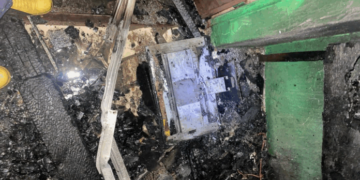Efforts to introduce an independent Interconnect Clearing House (ICH) in the country has generated public debate in recent times. Although sections of the populace strongly oppose the programme, it appears such criticisms are premised on the lack of or low knowledge in the operations of the ICH.
It must, however, be stated that the debate is necessary because though the ICH concept may not be a recent invention, it holds some benefits that can positively affect the fortunes of the local telecommunications industry.
This article is informed by the need not to sweep the issues under the carpet but to discuss them for education purposes.
In telecommunication, a Clearing House is a common, independent platform for the billing and settlement of interconnect accounting traffic for all existing and future telecom operators in a particular country or region.
In effect, the Clearing House takes over all the functions relating to the preparation of billing information and reconciliation reports. This is akin to what pertains in the banking system, for instance. When a cheque is issued, it goes into a common place where all others are brought for settlement.
It may be debatable whether a telco is actually a bank or not but with the increased connectivity and the growth of transactions across their networks, some form of settlement and national clearing scheme similar to the way banks operate would be a good way of creating the right kind of environment.
A clearing house in a country or a region, for that matter, would only really work in developing regions of the world because the infrastructure is not too advanced. It would also reduce the risk for investors, as well as government, the national operators, local banks, retailers and the network users.
In fact, it could promote trade and commerce as well as inward investment by virtue of the self-regulatory nature of the relationships between these stakeholders.
Most operators with their own interconnect solutions have either developed them in-house, paid to have them built or bought an interconnect product licence from a solution vendor. In all three cases, significant amounts of money are spent before the solution is deployed.
With a licence sale, the operator will usually pay a substantial licence fee in the first year based on the projected volumes of Call Detailed Records (CDRs) to be processed and an annual maintenance charge of between 15 per cent and 20 per cent to cover support and product upgrades.
There will also be additional incremental licence fee payments as certain CDR volume thresholds are reached. The operator meets all other costs, including implementation and hardware.
Operators striving to reduce their operating costs are increasingly looking at the option of moving their interconnect billing to a bureau, a common platform.
This bureau, which can be called the ICH, offers a “pay as you go” model without significant up-front payments.
With a Bureau option, there is a processing charge for every CDR that is processed. As volumes rise, the processing charge per CDR may be reduced.
It helps operators to keep costs down significantly as they do not have to meet the costs of hardware, software and a computing environment. The cost of implementing and testing new releases of software no longer falls to the operator nor does the cost of recruiting, training and retaining technical staff.
Using a Bureau should allow operators to concentrate on the core business of providing service for their customers, as well as passing the cost benefits to the subscriber, by way of lower tariffs.
































